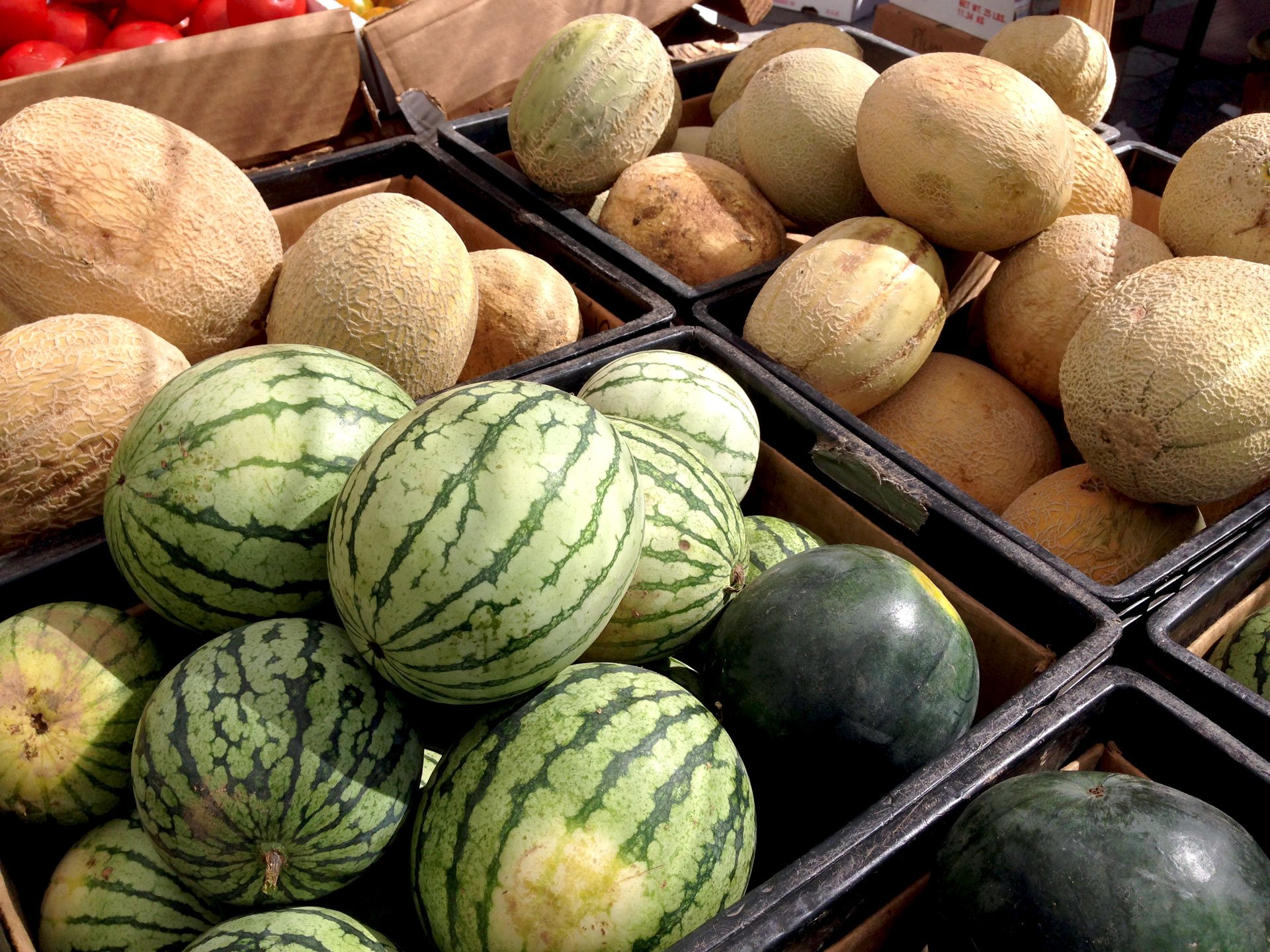Real Food Encyclopedia | Melons
Culinary historians cannot agree about the melon’s (Cucumis melo) point of origin. Sources have suggested it could have originated in Persia, Afghanistan or Africa. Regardless of where they first appeared, melons are an ancient and diverse group of fruits, encompassing cantaloupes, honeydews, muskmelons and more.
Fun facts about melons:
- In “De Re Coquinaria” (On the Subject of Cooking), first century Roman gastronome Apicius includes a savory recipe for melon, simmered with vinegar, honey, ground pepper and parsley, plus something referred to as Liquamen, the ancient Roman version of fish sauce.
- The cantaloupe is named after Cantalupo, a town near Rome, where melon seeds from Armenia were grown on papal estates, probably around the early 16th century, according to Waverley Root in his compendium “Food.”
- In the 1825 gastronomic treatise “Physiology of Taste,” Jean Anthelme Brillat-Savarin wrote that melons were edible only at their peak moment of ripeness, “as soon as they have reached all the perfection to which they are destined.”
What to look for when buying melons
Different varieties of melon have different characteristics, with the muskmelon — what’s known in the U.S. as a cantaloupe — is defined by a netting or webbed exterior. A true cantaloupe, meanwhile, has more of a warty, rough skin. Both can be as small as a soft ball and as large as a volleyball. Flesh can be pale orange, salmon pink or green. Its relatives in the C. melo indorus group – honeydew, casaba and Santa Claus, to name a few – are all smooth-skinned with flesh that is white, pale yellow or pale green. Size can vary tremendously in this group, too..
When shopping, you want to look for a melon that is free of nicks or cuts in the rind and mold on the blossom end. Avoid any with soft or mushy spots. Give it a tap; it should sound a bit like a drum and should feel heavy in your hand. The best sign that a melon is ripe is its scent: most varieties of melon should have a strong floral, honey-like scent when ripe.
Sustainability of Melons
U.S.-grown cantaloupe has a relatively low pesticide load, earning the “Clean 15” designation in the Environmental Working Group’s Shopper’s Guide to Pesticides in Produce, which calls out produce with the highest pesticide load.
But cantaloupe has had more than its share of food safety scares in recent years. Contaminated cantaloupe from a Colorado farm was the source of a multi-state listeria outbreak in 2011. Thirty-three people died and 147 people fell ill in 28 states, one of the deadliest foodborne outbreaks in nearly 100 years.
And in 2012, two people died and 141 were hospitalized in connection with salmonella-contaminated cantaloupes grown in Indiana. In the wake of these outbreaks, California cantaloupe growers implemented a rigorous food safety program that includes mandatory government audits.
To date, the honeydew and its relatives in the winter melon (or C. melo indorus) group have escaped the wrath of foodborne illness; some argue that the net-like rind of the muskmelons is inviting to pathogens and increase the risk of contamination.
Geography
China is the top producing melon country, followed by Turkey and Iran. In the U.S., California supplies three-fourths of the country’s commercial output, followed by Arizona, Texas, Georgia and Florida.
Seasonality
Melon needs the heat of the sun – and lots of it – in order to deliver its promise of sweet succulence. In three- or four-season climates, that means melon shows up from mid to late summer, when nights are still mild. It thrives only in the presence of heat and relatively dry conditions. Once the autumn rains come, you can kiss those melons goodbye.
Eating melons
Storing
In the spirit of eating melon in the moment, keep whole melons out of the refrigerator, especially if it needs a day or two of ripening. Wash the exterior under running water just before eating; melon has a tendency to mold, so washing in advance will just hasten the decay. Leftover cut melon should be refrigerated and stored in a container with an airtight lid. The safest bet is to remove all rind to minimize risk of cross-contamination.
Cooking
Whether eaten raw or cooked, cantaloupe and other melons need your attention sooner rather than later. They are highly perishable and can morph from honeyed morsels with a heady perfume to a fermentation crock that smells like dirty socks in the span of an afternoon. Don’t waste any time!
Like its cousin the watermelon, melon is by weight more than 90 percent water, making it an excellent thirst quencher. Try using it in smoothie or aqua fresca recipes.
Other than fruit salad or all by its lonesome over the sink, would you ever consider roasting muskmelon, as the folks behind “The Joy of Cooking” recommend? Serve it over ice cream or with other roasted fruits.
Melon lovers also like it savory; try it with a few grinds of pepper, a little salt and/or with prosciutto.
Preserving
If you want to extend the shelf life of your melon, try swapping cantaloupe for cucumbers in and make cantaloupe pickles, mixed in a ginger and cinnamon-scented brine.
Nutrition
Melon is good food-as-medicine. One cup of melon provides the daily recommended amounts for Vitamins A and C, a decent source of potassium, folate and fiber, all for about 54 calories. It also contains small amounts of heart-healthy Omega-3 fatty acids. The pigments in the pastel-orange flesh are rich in beta-carotene and several other disease-fighting antixodants.
Top photo by seagames50/Adobe Stock.


